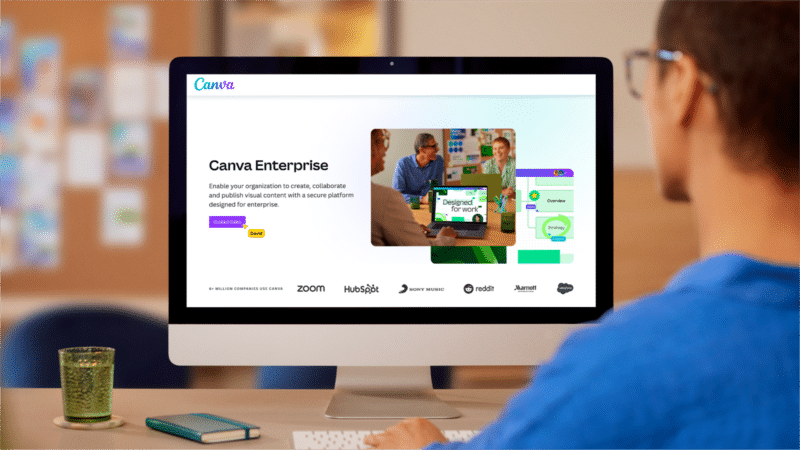
As customers, we’re all bombarded with marketing messages everywhere we turn. And, if a company’s message is not relevant to us or our interests, we tune it out completely. That is why businesses need to adopt disruptive marketing strategies to stay competitive.
Disruptive marketing is about more than just creating a buzz. It’s about rethinking the way you do marketing and breaking the rules you’ve been playing by. It’s about taking risks and trusting your intuition.
In today’s distraction-filled, ever-changing landscape, a customer’s attention is harder to come by than ever before. How we consume media has shifted dramatically in just a few years, making us more resistant to traditional marketing techniques.
An overview of disruptive marketing
Disruptive marketing itself is changing as the way of thinking about marketing evolves. Concepts like the metaverse, AI and NFTs have made us rethink traditional web platforms. New perspectives challenge the old guard at every corner. Even in familiar environments, being bold and taking risks are about doing things differently to stand out from the competition.
A tough market and continually changing global demands mean that brands need to get more creative and think outside the box to stand out from the 1000s of marketing communications customers receive daily.
According to Wunderman’s Study, “88% of U.S. consumers want to engage with brands that are setting new standards in meeting their expectations.” And, “74% said brands can do so by providing a higher level of customer service.”
In this setting, businesses need to start thinking about how to be more disruptive and set themselves apart from the rest, even in SEO campaigns.
Some of the most successful companies in the world have used disruptive marketing strategies to great effect. Apple, Virgin and Red Bull are all companies that have disrupted their respective industries.
Why is disruptive marketing so important?
There are three main reasons why disruptive marketing has gained so much traction and why it’s so important for businesses today:
1. Rapid technology growth
Technology is growing at a rapid pace, and this is making a big impact on the way we consume media. We now have access to more information than ever before, and we can consume it whenever and wherever we want.
PWC carried out extensive research on the permanent change in consumers’ habits and values during COVID-19. 50% of them have become more digital.
Social media trends also play a big role in how customers consume information. For example, the rise of Instagram Stories has led to businesses creating more “snackable” content that is easy to consume on the go. Short-form vertical videos are another trend made popular by TikTok and is now being used by businesses across all social media platforms.
Now, brands have to compete with millions of content creators for attention. This is why it’s important to stand out from the crowd and be disruptive.
2. Gen Z customers
Generation Z is the most diverse, tech-savvy, and social media-connected generation ever. They were born in the digital era and grew up surrounded by rich media that occupied their senses 24 hours a day.
It has led to them having shorter attention spans and higher expectations. They’re also more likely to question traditional authorities and are more skeptical of standard marketing techniques.
To reach this generation, businesses need to be more creative and authentic in their marketing. They also need to focus on creating experiences rather than just selling products.
3. Oversaturated market
There are now more businesses than ever before. In the U.S. alone, there are over 30 million small businesses. This number will only go up as the barriers to entry continue to decrease.
Businesses are selling the same products and services in the same industries, using the same marketing techniques. With so many brands competing for attention, it’s becoming harder and harder to stand out from the crowd.
Steps to build a disruptive marketing campaign
It’s time to start thinking outside the box and breaking some rules. If you want to build a disruptive marketing campaign, there are a few things you need to keep in mind:
1. Know your industry
You can’t disrupt an industry if you don’t understand it. Do your research and try to understand the landscape. What are the main players? What are their marketing strategies? What are the common pain points for customers?
Tools like Think With Google, Marketing Engine, Survey Monkey, BizStats and others can help you construct in-depth knowledge of the industry, products or services. The key to developing a better understanding of your industry is to think about its weaknesses and the unmet needs of potential customers.
Once you’ve understood the industry well, you can start thinking about how your brand can fill the gap and create something new or make substantial improvements.
2. Understand your customer
Today’s customers are more discerning and have higher expectations than ever before. They can spot a fake, inauthentic or salesy message from a mile away.
To create a disruptive marketing campaign, you must focus on creating an emotional connection with your audience. This starts with understanding who they are, what they care about, and their needs.
Data science can help marketing teams unearth customer insights at scale, which can help create more personalized and relevant content. Many businesses already use data from Google Analytics, Facebook, ActiveCampaign, Youtube, and many others to personalize their digital marketing campaigns and see great results from segmentation and retargeting.
3. Do the unexpected
People are used to seeing the same old marketing techniques. They are bombarded with ads, emails, and sales messages daily. You need to do the unexpected to stand out.
Surprise them with something unseen and remarkable. Challenge the status quo and push the boundaries. It will grab attention and make people sit up and take notice of your brand.
Applying the latest innovations like artificial intelligence and machine learning can be a great way to do something unexpected. These technologies can help you create interactive experiences, personalized content, and predictive analytics at scale.
4. Stay relevant
It’s one thing to be disruptive, but you must also ensure that your campaign is relevant to your target audience. Relevance is key to creating a connection with your audience and getting them to take notice.
Digital marketing platforms like Google and Facebook are constantly changing and evolving. They are regularly introducing new features and updates to make their platforms more user-friendly. Google’s latest helpful content update is one example.
As a marketer, you need to stay on top of these changes and find ways to add meaning and value to customers’ lives.
Remember, if you can emotionally make your brand resonate with your target audience, your customer will be more likely to find a way to resonate with your brand.
5. Use humor
Humor is a great way to break through the noise and connect with your audience on a deeper level. It allows you to show off your brand’s personality and humanize your message.
When used correctly, humor can be a powerful marketing tool. It can help you build trust, differentiate your brand, and make a lasting impression. It also shows that you’re not afraid to have a little fun and that you’re confident in your brand
Of course, this doesn’t work with every brand, but if you can find a way to make your customers laugh, it will help you to build a strong relationship with them.
6. Refresh your thinking
Don’t stick to the same old marketing methods everyone else uses. To be disruptive, you need to think outside the box.
Be creative and experiment with new ideas. Try something that’s never been done before. This could be anything from a new way to reach your target audience to a new product or service.
From SEO to social media, there are loads of different marketing channels that you can use to reach your target audience. Get creative with your content by changing content drivers, wording styles and themes. Try new tools and features as they become available in beta. Consider a multi-touchpoint approach to reach your audience.
The key is to be brave and take risks. It’s the only way to truly stand out from the crowd.
7. Break the stereotypes
The goal of a disruptive marketing campaign is to redefine the rules and conventions of the industry. Break the existing stereotypes in your industry.
Let’s say all other players in your industry are using social media for their influencer marketing to attract and engage customers. Leverage that by moving to a lead-nurture marketing model that builds through SMS/text, chatbots and email. You can break the mold by using a different marketing technique that no one else is using.
There are no rules when it comes to disrupting the status quo. The world is your oyster, so go out there and make some waves.
8. Knowing when to push and pull back
A successful disruptive marketing campaign requires a delicate balance. You need to know when to push forward and when to pull back.
If you push too hard, you might come across as being too aggressive. On the other hand, if you pull back too much, your campaign might not be successful.
In addition, businesses have to work with a limited marketing budget. You need to make sure that you’re allocating your resources in the most efficient way possible.
Finding the right balance between being disruptive and being too pushy is important. If you’re not sure when to push or pull back, consider seeking out an innovative marketing agency.
The bottom line
We have to find ways to grow in a dynamic world where technology, products and services constantly change and evolve. This can be overwhelming for customers who are faced with an overload of information every day.
As a result, standing out from the crowd has become one of the main challenges for marketers. Disruptive marketing can help you to compete in the global market more effectively and get noticed by your customers.









































































